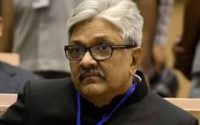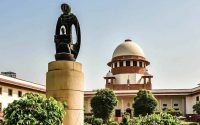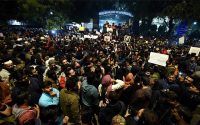Ayodhya: Acid test for Indian Supreme Court.
Source – khaleejtimes.com
The Supreme Court of India convened on Monday after the Diwali break and now faces perhaps the most challenging two weeks in the nation’s 70 years of independent judicial history before incumbent Chief Justice Ranjan Gogoi retires on November 17.
In his place and perhaps absorbing the flak from the fallout of the decision that ostensibly is slated for next week but could be earlier is CJ designate Sharad Arvind Bobde. A five-member bench will deliver a verdict on what is essentially a land dispute between three parties; as per the Allahabad High Court decision on four title suits relating to the dispute on September 30, 2010, Ayodhya land to be divided into three equal parts. The site of the Ram Lalla idol would go to the party representing Ram Lalla Virajman (that is the installed infant Ram deity), Nirmohi Akhara to get Sita Rasoi and Ram Chabutara, and the Sunni Wakf Board to get the rest.
This even break-up, which followed a panel led by former SC judge F M Kalifulla, failed to reach a conclusion and was rejected by all three parties. It is now being tried at the apex court for nearly a decade.
A marathon 40-day hearing ended on October 16 and the verdicts were reserved. There is now no more reel left in the spool and the hearings are over. Justice Bobde has indicated squarely that the verdict will only concentrate on the land dispute as in any other such case and have no overtones of religious faith or politics to impact on the decisions. That stance may be legally legitimate but it is a vain hope that with expectations in millions of people across the religious divide reaching an almost scary crescendo that whatever the Supreme Court decides will be taken in that enlightened manner.
On the contrary the fear is that polarisation will be further sped up whatever the decision and just like it happened with the Allahabad High Court the reception will be contentious. If the judges support the third of each division as offered by the High Court it only underscores a wasted decade and leaves everyone unhappy. To overturn that decision the Supreme Court must find a legally viable reasoning why that decision was bad in law and then offer an alternative decision also based on law, evidence, and facts. Whether the fresh submissions and withdrawals in the interim decade support such a conclusion is not known.
Whether the apex body has the discretion to take into account the national good and offer advice and counsel is a moot point, for if it could do that then the Bobde statement of intent that it is only dealing with a land dispute becomes obsolete. And yet, if it had that leeway it could have followed the tolerance message of a small nation called the UAE that has taken religious amity to a whole other level. With 18 churches of different denominations and a massive Swaminarayan temple in the making it has sent out a message of tangible and measurable goodwill. It does not stop here. A plan has been announced to build a single edifice in Abu Dhabi that will house a church, a synagogue and a mosque in blessed harmony as a testament to interfaith respect and regard.
The Chairman of the Department of Community Development, Dr Mugheer Al Khaili, went on record as saying the UAE is in the forefront of efforts aimed at achieving interaction among all religions and cultures and promoting values of tolerance, love, mutual respect, and peace across the world.
This Abrahamic Family House is set to be completed by 2022.
These two weeks ahead for India’s Supreme Court would have been significant for a decision on the Rafale purchase from France and contempt proceedings against former Congress President Rahul Gandhi for insulting Prime Minister Narendra Modi (calling him a thief) but are now paling in comparison to the Ayodhya decision which will have repercussions in the short and long term.
While it is salutary that both political and religious entities are making the right sounds of harmony, patience, and promise to ‘respect’ the verdict, the way to hell is paved with good intentions and these might collapse as the fringe groups create chaos by drumming on the sentiments of the various communities. When it comes to religion India has a volatile public.
Since the litigation does not include giving permission to build a Ram temple the Supreme Court can only decide who the land belongs to and that is all. As such, what began in 1992 when the Babri Majid was destroyed may not see an end to the controversy even after the road runs out on legal options. From August 6, 2019, the Ayodhya administrator had imposed Section 144 in Ayodhya district that will last till December 10 but may be extended. Section 144 prohibits any assembly of four or more persons. This in itself is a worrying factor since prohibitions prompt violence.
Come the next few days the 2.77 acres of land in a nation of 812 million acres will be on centerstage and capable of creating a dubiously historic precedent. One can only hope that common sense and calm minds will prevail.



